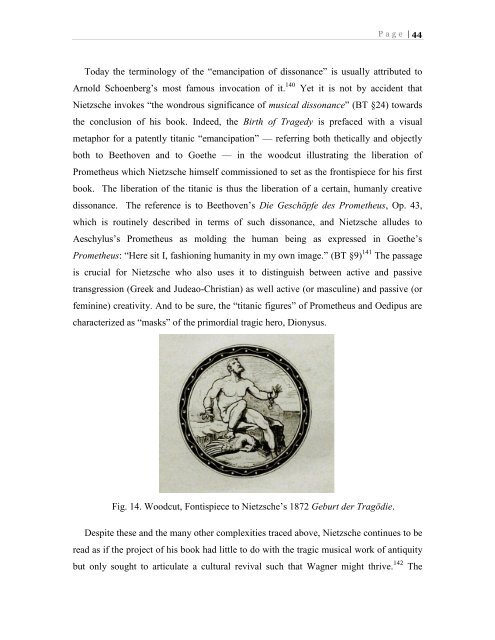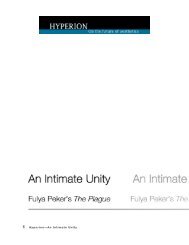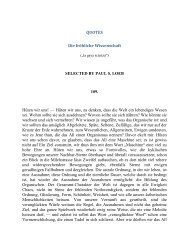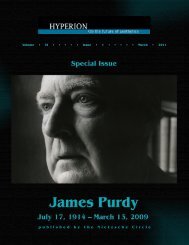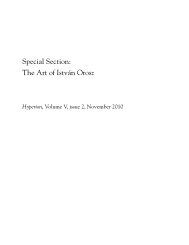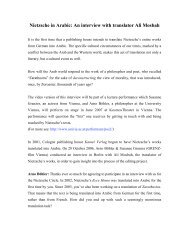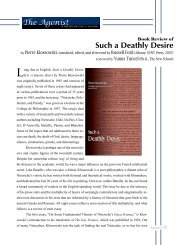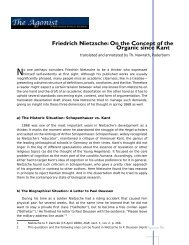Music, The Birth of Tragedy, and Nietzche's ... - Nietzsche Circle
Music, The Birth of Tragedy, and Nietzche's ... - Nietzsche Circle
Music, The Birth of Tragedy, and Nietzche's ... - Nietzsche Circle
You also want an ePaper? Increase the reach of your titles
YUMPU automatically turns print PDFs into web optimized ePapers that Google loves.
P a g e | 44<br />
Today the terminology <strong>of</strong> the “emancipation <strong>of</strong> dissonance” is usually attributed to<br />
Arnold Schoenberg’s most famous invocation <strong>of</strong> it. 140 Yet it is not by accident that<br />
<strong>Nietzsche</strong> invokes “the wondrous significance <strong>of</strong> musical dissonance” (BT §24) towards<br />
the conclusion <strong>of</strong> his book. Indeed, the <strong>Birth</strong> <strong>of</strong> <strong>Tragedy</strong> is prefaced with a visual<br />
metaphor for a patently titanic “emancipation” — referring both thetically <strong>and</strong> objectly<br />
both to Beethoven <strong>and</strong> to Goethe — in the woodcut illustrating the liberation <strong>of</strong><br />
Prometheus which <strong>Nietzsche</strong> himself commissioned to set as the frontispiece for his first<br />
book. <strong>The</strong> liberation <strong>of</strong> the titanic is thus the liberation <strong>of</strong> a certain, humanly creative<br />
dissonance. <strong>The</strong> reference is to Beethoven’s Die Geschöpfe des Prometheus, Op. 43,<br />
which is routinely described in terms <strong>of</strong> such dissonance, <strong>and</strong> <strong>Nietzsche</strong> alludes to<br />
Aeschylus’s Prometheus as molding the human being as expressed in Goethe’s<br />
Prometheus: “Here sit I, fashioning humanity in my own image.” (BT §9) 141 <strong>The</strong> passage<br />
is crucial for <strong>Nietzsche</strong> who also uses it to distinguish between active <strong>and</strong> passive<br />
transgression (Greek <strong>and</strong> Judeao-Christian) as well active (or masculine) <strong>and</strong> passive (or<br />
feminine) creativity. And to be sure, the “titanic figures” <strong>of</strong> Prometheus <strong>and</strong> Oedipus are<br />
characterized as “masks” <strong>of</strong> the primordial tragic hero, Dionysus.<br />
Fig. 14. Woodcut, Fontispiece to <strong>Nietzsche</strong>’s 1872 Geburt der Tragödie.<br />
Despite these <strong>and</strong> the many other complexities traced above, <strong>Nietzsche</strong> continues to be<br />
read as if the project <strong>of</strong> his book had little to do with the tragic musical work <strong>of</strong> antiquity<br />
but only sought to articulate a cultural revival such that Wagner might thrive. 142 <strong>The</strong>


